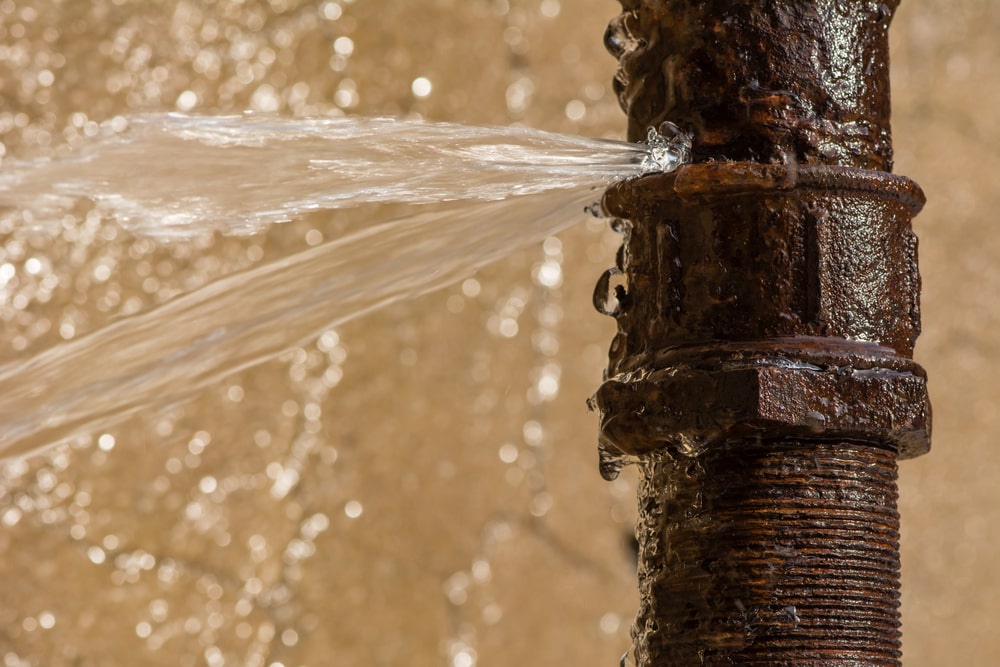
Nov 8, 2024
What to Do When a Water Pipe Leaks: A Quick Guide for Homeowners

A leaking water pipe can quickly lead to serious water damage in your home if left unchecked. Whether it’s a slow drip or a sudden burst, taking immediate action can help minimize damage and prevent costly repairs. Here’s a guide on what to do when a water pipe leaks, including temporary solutions and preventive steps while you wait for professional assistance.
1. Turn Off the Water Supply
Locate the Shut-Off Valve: The first step when you notice a water leak is to stop the flow of water. Locate your main shut-off valve, which is typically found near your water meter, basement, or crawl space. Turn it clockwise to shut off water to your entire home.
If You Can't Find the Valve: Look for individual shut-off valves near the source, like under sinks or behind toilets, to stop leaks in isolated areas if the main valve isn’t immediately accessible.
2. Drain the Remaining Water
Open Faucets and Drains: After turning off the water, open all the faucets in your home. This will help drain any remaining water in the pipes, reducing pressure and the risk of more leaks.
Flush Toilets: Flush all toilets to release any stored water in the system, which can help minimize further leakage.
3. Contain the Leak and Prevent Water Damage
Use Containers or Buckets: Place buckets or containers under the leaking area to catch any dripping water and prevent it from seeping into floors or walls.
Protect Your Belongings: If the leak is near furniture or flooring, use towels, plastic sheets, or waterproof barriers to protect your belongings and prevent water damage.
Dry Up Standing Water: Use a mop, towels, or even a wet-dry vacuum to remove any standing water as quickly as possible to avoid further damage.
4. Apply Temporary Fixes to Stop the Leak
Pipe Repair Tape: For small leaks or cracks, wrap pipe repair or waterproof tape tightly around the leak. Ensure the pipe is dry and wrap the tape multiple times to form a temporary seal.
Epoxy Putty: If you’re dealing with a pinhole leak or small crack, epoxy putty can offer a quick fix. Knead a small piece until it’s soft, then press it firmly over the leak. It should harden quickly, providing a strong, temporary seal.
Rubber Patch with Hose Clamps: Place a piece of rubber (like a section of an inner tube) over the leaking area and secure it tightly with a hose clamp. This adds pressure, helping to control the leak until a professional can make a permanent repair.
5. Use a Pipe Clamp for Added Support
For larger or high-pressure leaks, a pipe clamp can add extra stability. Place a rubber patch over the crack, then secure it with the clamp, tightening it until water stops leaking.
6. Monitor the Leak and Seek Professional Help
Keep an Eye on Temporary Fixes: Temporary fixes can buy you some time but may not hold indefinitely. Keep an eye on the area to ensure the leak doesn’t worsen, and be prepared to take additional steps if needed.
Contact a Professional Plumber: While temporary solutions are useful, it’s crucial to schedule a plumber as soon as possible. Professionals can assess the situation, repair or replace damaged pipes, and check for any hidden issues.
7. Prevent Future Pipe Leaks
Insulate Pipes: Insulating your pipes can prevent them from freezing in winter, one of the most common causes of leaks and burst pipes.
Check Water Pressure: Excessively high water pressure can strain pipes and joints, increasing the likelihood of leaks. Consider installing a water pressure regulator if your home has consistently high water pressure.
Regular Plumbing Inspections: Regular plumbing inspections can help detect weak spots, corrosion, and other potential issues before they become serious problems.
Common Causes of Water Pipe Leak
Understanding why leaks happen can help you take preventive steps in the future. Here are some typical causes of pipe leaks:
Corrosion: Over time, metal pipes can corrode, leading to cracks and holes.
High Water Pressure: Excessive water pressure can stress pipes, especially at joints, causing leaks.
Clogs: Clogs in your plumbing system can create pressure buildup, eventually leading to leaks or burst pipes.
Temperature Changes: Freezing and thawing cycles can cause pipes to expand and contract, leading to cracks or breaks.
How to Tell If You Have a Hidden Water Leak
Some leaks aren’t immediately visible, but there are signs that might indicate a hidden leak:
Increased Water Bill: A sudden spike in your water bill could signal a hidden leak.
Damp Spots: Damp spots on walls, ceilings, or floors are red flags for leaks.
Mold or Mildew: Persistent dampness can lead to mold growth, which is often a sign of a hidden leak.
When to Call a Water Damage Restoration Service
For significant leaks that lead to flooding or extensive water damage, it’s essential to consider water damage restoration services. Restoration professionals have specialized equipment to dry affected areas, prevent mold growth, and repair structural damage caused by water.
By following these steps, you can control a water pipe leak temporarily and minimize damage until a professional arrives. Remember, while DIY fixes are helpful, a permanent repair is essential to avoid recurring leaks and potential water damage.




